If you spot a brown furry creature down by the river you may be wondering whether it’s a water vole or rat. This post has everything you need to know to help you spot the difference between the two!
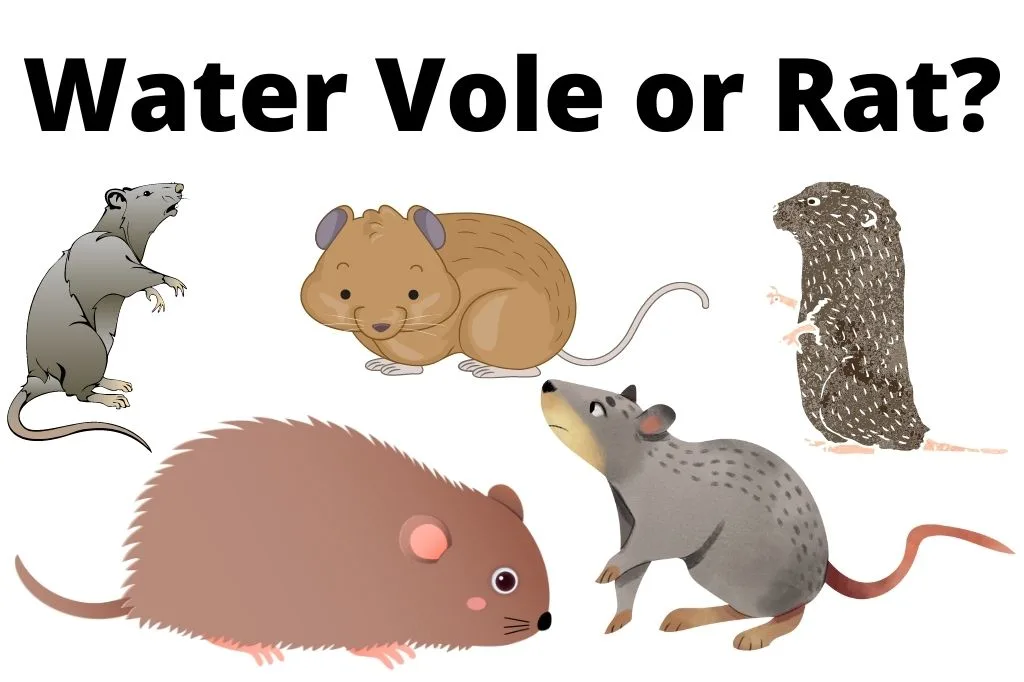
How to Tell if it’s a Water Vole or a Rat
Rats have long tails that are pink, hairless, and the same length as their body. They also have pointy noses. A water vole on the other hand has a much shorter tail which is tucked away, and a blunt nose which is much rounder.
The table below sums up the main differences between a water vole and a rat.
| Water Vole | Rat |
|---|---|
| Short, brown, furry tail | Large, long, pink tail |
| Round nose | Pointed nose |
| Ears are hidden | Ears are visible |
| Furry paws | Pink paws |
| Round body | Long body |
| Chestnut-brown fur | Grey-brown fur |
Long Tail – Water Vole or Rat?
-
A rat has a long, thick, scaly tail that is as long as its body.
-
A water vole has a furry tail which is thin and short.
Round Nose – Water Vole or Rat?
-
A rat has a pointed nose.
-
Water voles have chubby faces and rounder noses.
Pink Ears – Water Vole or Rat?
-
Rats have large ears that are pink and stick above their head.
-
Water voles have small ears. Their short fuzzy ears are tucked away and less easy to see.
Furry Paws – Water Vole or Rat?
-
Rats have pink, hairless paws.
-
Water voles have furry paws
Both rats and water vole have four toes on their forefeet, and five toes on their hind feet.
Large Body – Water Vole or Rat?
-
The average male rat is 50cm long. Its body is long and thin.
-
The average male water vole is 20cm long. Its body is round and chunky.
Brown Fur – Water Vole or Rat?
-
Rats have greyish brown or black fur.
-
Water voles have deep brown fur that’s a chocolate colour.
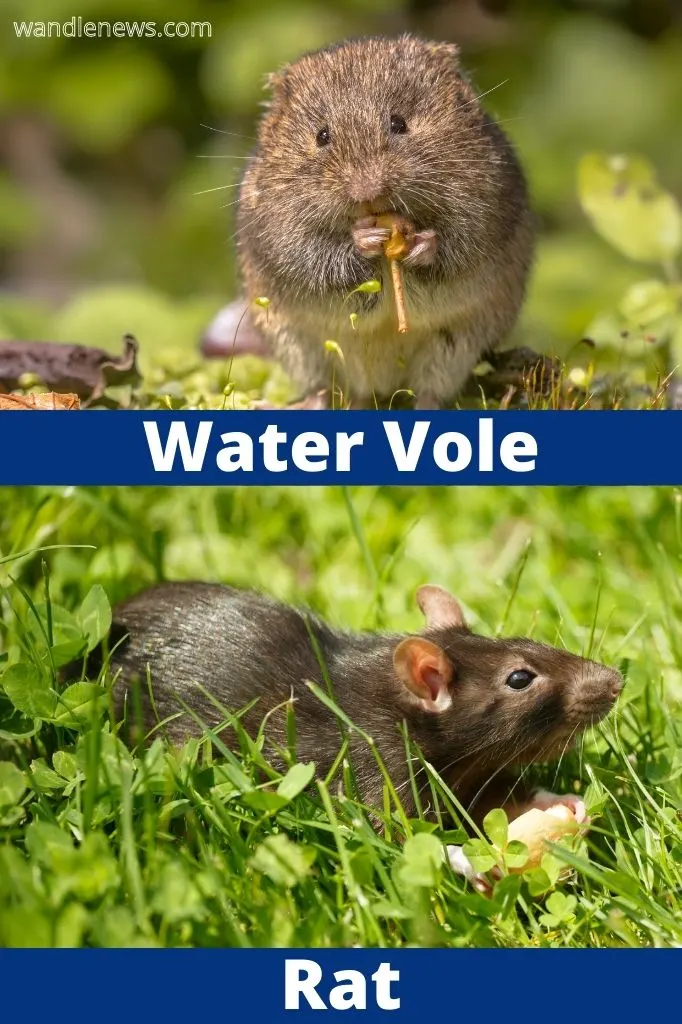
Habitats of Water Voles vs Rats
Both water voles and rats can be found close to rivers and other waterways, which is why the two are often mixed up. Rats however can be found in a large variety of other habitats where you would not find a water vole.
Water voles live close to rivers, lakes, ponds and marshes. They like to live close to water where they can create burrows on the banks of rivers and lakes. They feed off the grasses that grow close to bodies of water.
Rats can be found not only near rivers, but also in gardens, rubbish tips, farms, woodlands, wetlands, coastal areas, or towns.
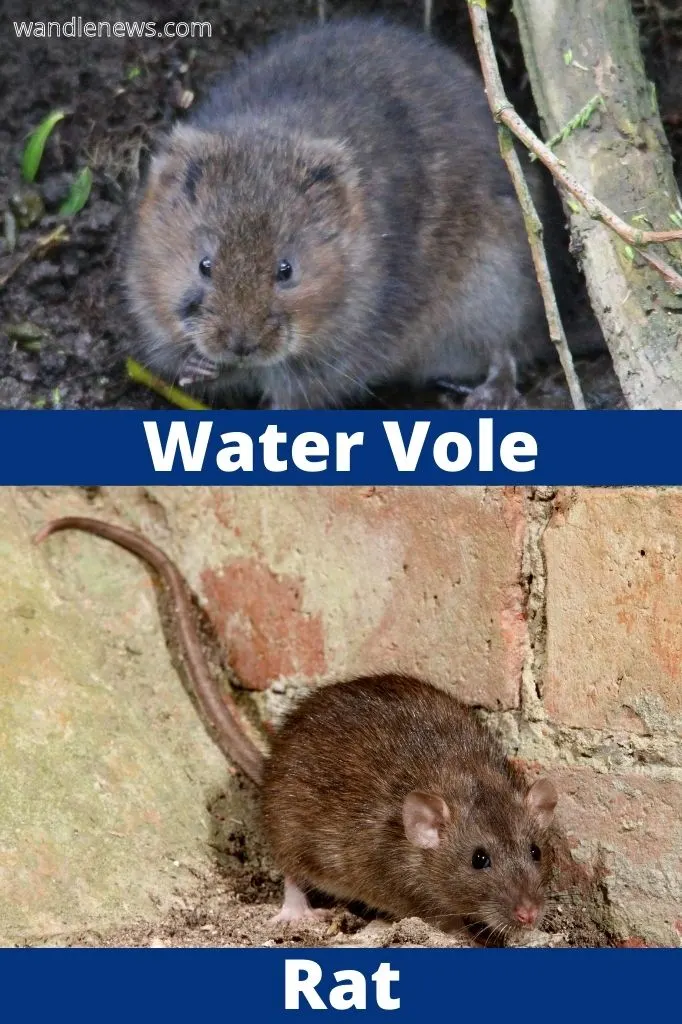
Swimming Abilities of Water Voles and Rats
Both rats and water voles are good swimmers, but unlike rats, water voles will dive into the water if they are alarmed.
If you spot a water vole or rat swimming, one way to tell the difference is by their body length. Rats have much longer, thinner bodies compared to water voles.
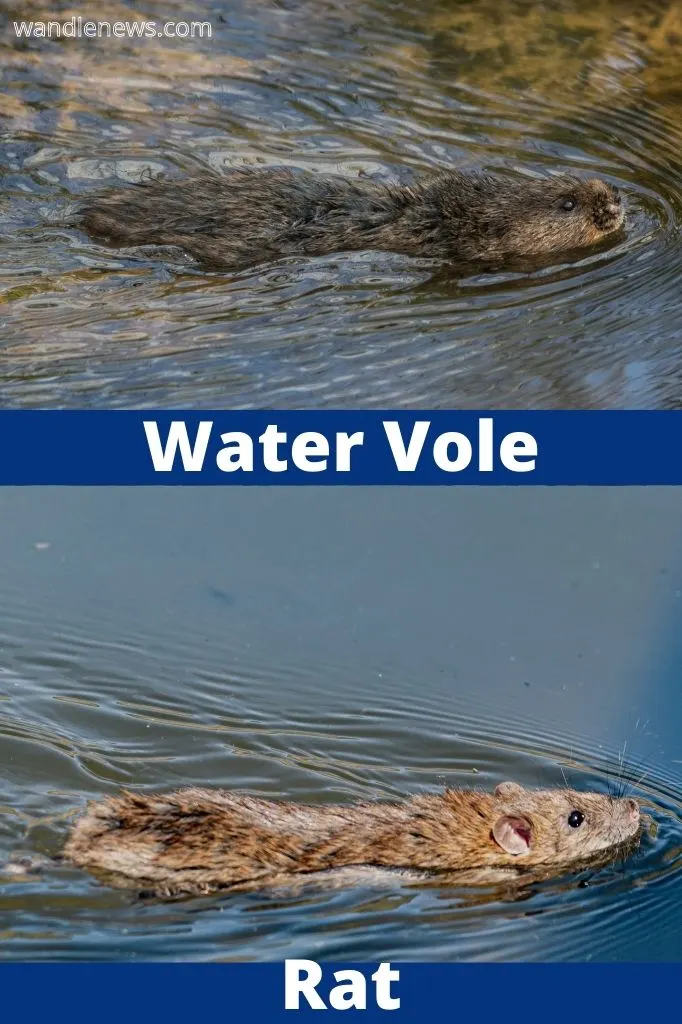
Signs of Water Voles and Rats
If you are out looking for wildlife, and want to spot a water vole, try looking for signs of their droppings.
Water vole droppings are green, purple, or brown and have a texture like putty. They are usually found in piles close to the water’s edge. You will know the difference between water vole droppings and rat droppings from their colour.
Rats leave groups of oval droppings which are black or light brown, and have a more slimy texture. Their droppings are larger, and around half an inch long.

Numbers of Water Voles Compared to Rats in Britain
There are far fewer water voles in Great Britain compared to rats. In 2020 it was estimated there were 132,000 water voles in Great Britain, compared to 150 million rats.
Unlike rats, water voles are an endangered species. They used to be found in waterways all over Great Britain, but now there are far less. This is partly due to habitat loss, and partly due to the American mink, which escaped from fur farms in the 1960s and eat water voles for food.
Water voles are now being reintroduced to London’s rivers, including the River Wandle in South London, and the River Thames tributary in Kingston.
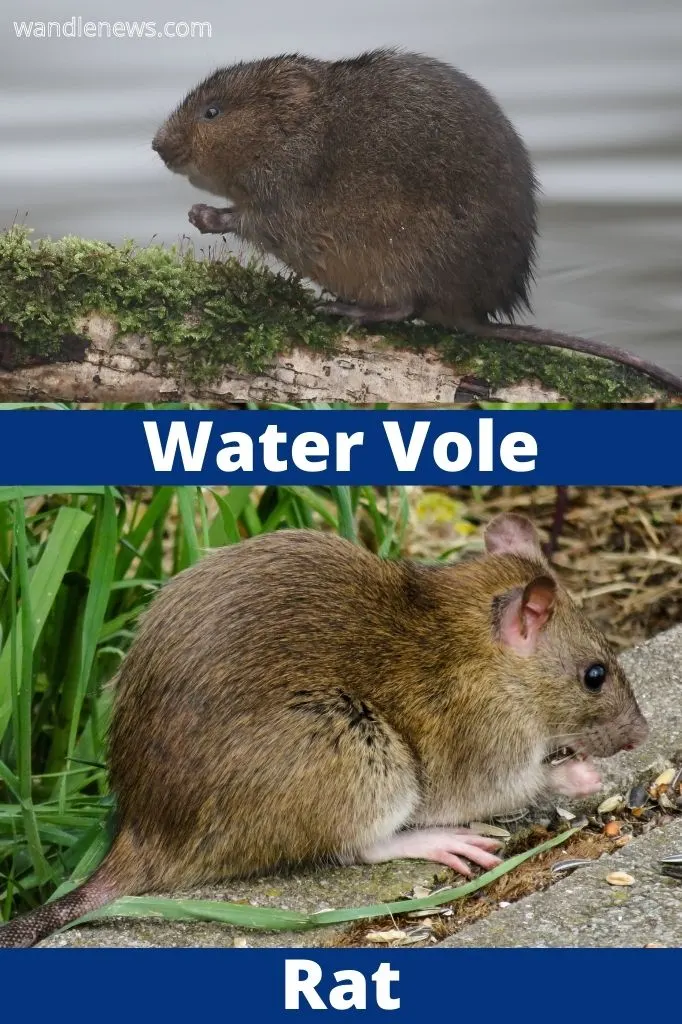
Types of Rat
There are two main types of rat in the United Kingdom: brown rats (also known as common rats), and black rats. The photograph below shows a brown rat. You can clearly see its long hairless tail and distinct ears.
Brown rats are often mixed up with water voles especially if they are spotted close to water. Rats however are much more adaptable compared to water voles, as well as being larger and more aggressive.
The term “water rat” is actually another name for a water vole, but has been mistakenly used to refer to a brown rat that lives close to the water.
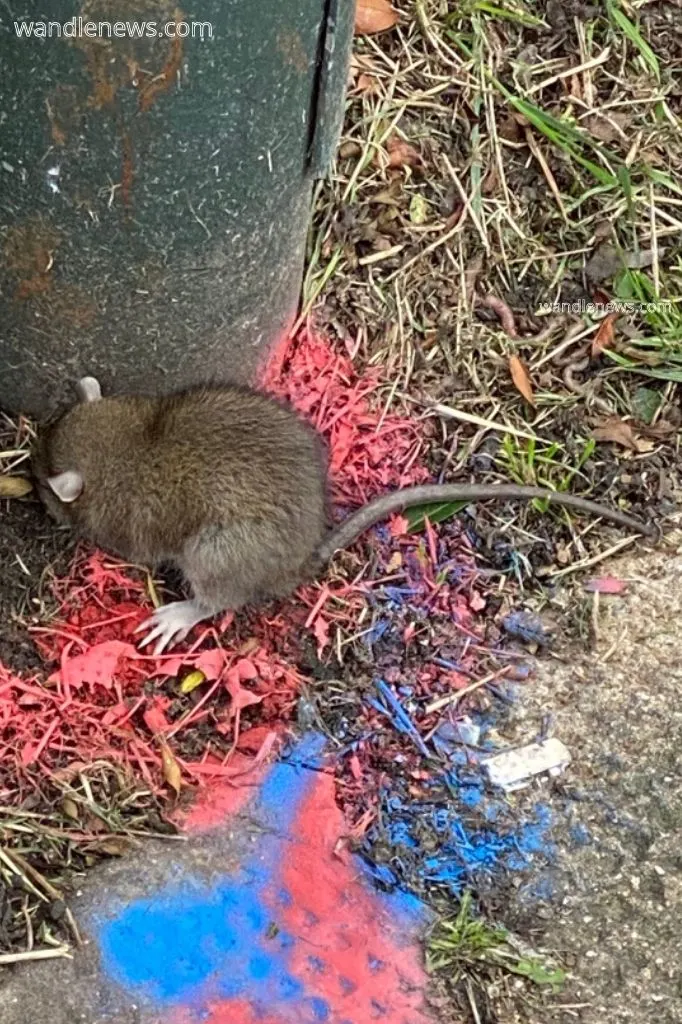
Types of Vole
There are three species of vole found in the United Kingdom: the water vole, field vole and bank vole. The European water vole (arvicola amphibius) is the largest species of vole in Britain.
The European water vole likes to live close to the water’s edge, and is found in areas of wet moorland. You can see in the photograph below that European water voles have chestnut-brown fur.
Unlike rats, all water voles are protected under the Wildlife and Countryside Act 1981. It is illegal to kill them or try to capture them. Water vole populations are now expanding thanks to different wildlife trusts across the country.
Perhaps one of the most famous water voles is Ratty from Wind in the Willows.
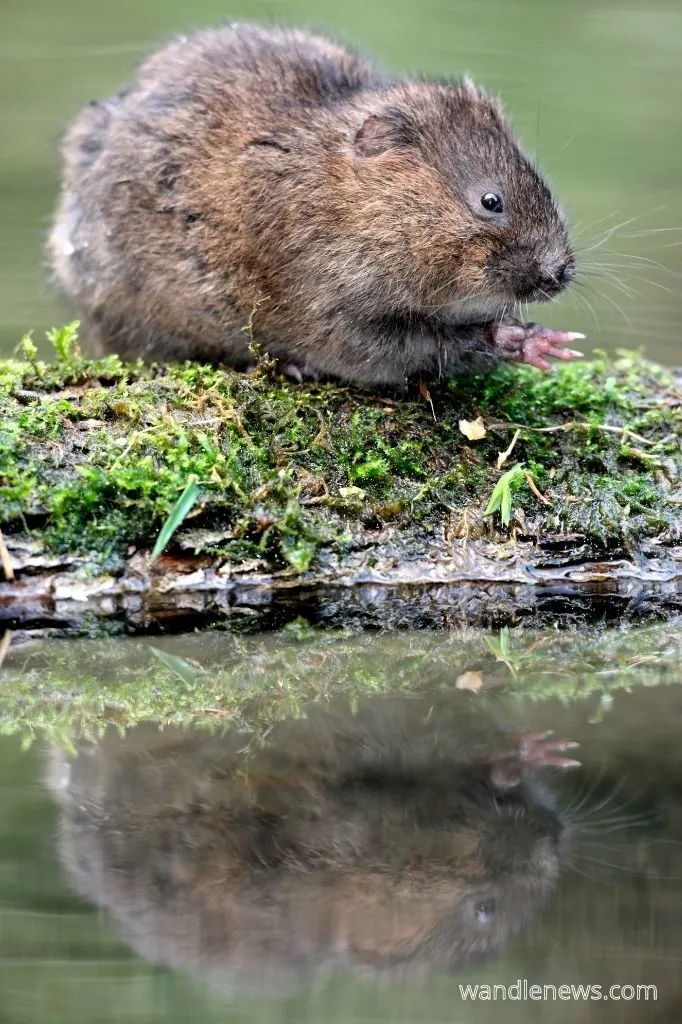
Breeding Season & Gestation Period
The breeding season for water voles is April to September, whereas rats breed all year round including during the winter months.
The gestation period for a female water vole is 20-22 days, which is similar to the gestation period for rats. Unlike rats however, who give birth to 8-18 baby rats in one litter, water voles only give birth to between 5-8 baby voles.
FAQs about Water Voles
What do water voles eat?
Water voles eat grass, plants and herbs that grow close to rivers and lakes. They have also been known to eat fruit and berries.
Are water voles dangerous?
Water voles are not dangerous, and will not cause any harm to property. The most damage they could do is to erode the sides of river banks with their extensive burrow systems.
Do water voles hibernate?
Water voles do not hibernate, however they are usually less visible during the winter months as they spend more time in their burrows than above ground.
How long do water voles live?
They average life span of a water vole is five months.
Why are water voles endangered?
Water voles have become endangered for several reasons. Their habitat has been lost due to riverside management, causing a dramatic decline in numbers. They have also been killed by American minks that now live wild in the British countryside.
Video Showing Both Water Voles and Rats
This Post was About the Difference Between Water Voles and Rats
Thank you for reading my article about water voles vs rats. If you have spotted a water vole down near the river, leave me a comment below and let me know! If you don’t see a water vole maybe you will spot one of their burrow entrances near the river bank.

Kiff
Saturday 24th of September 2022
Brilliant, very clear. Came up on a search for the difference between brown rat and water vole droppings. Helped confirm water vole droppings, sadly not on the River Wandle but along a beaver canal in the River Otter catchment in Devon.
Olivia Herlihy
Tuesday 27th of September 2022
Hi Kiff, Thanks for your comment. I'm glad the website was helpful to you! :-) Kind regards, Olivia